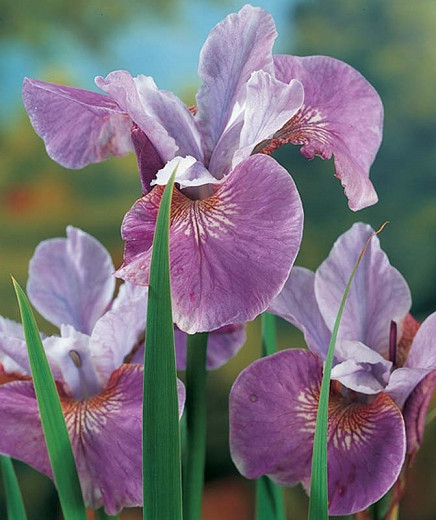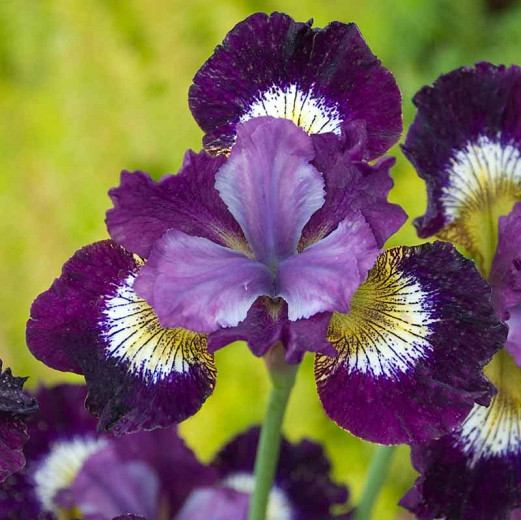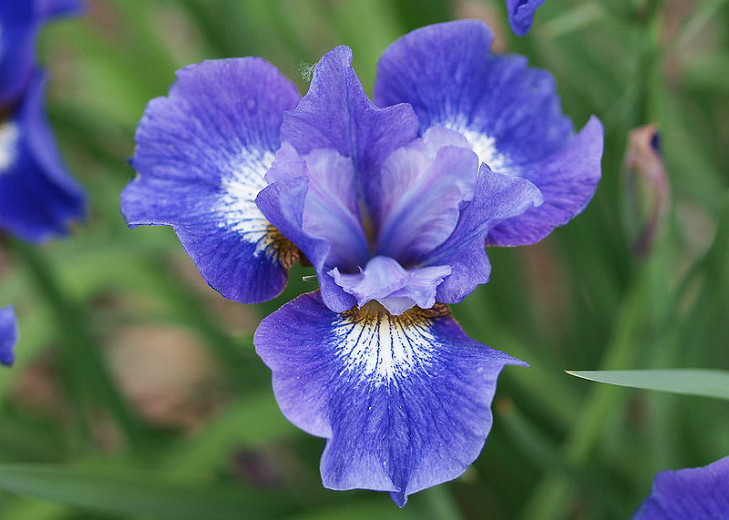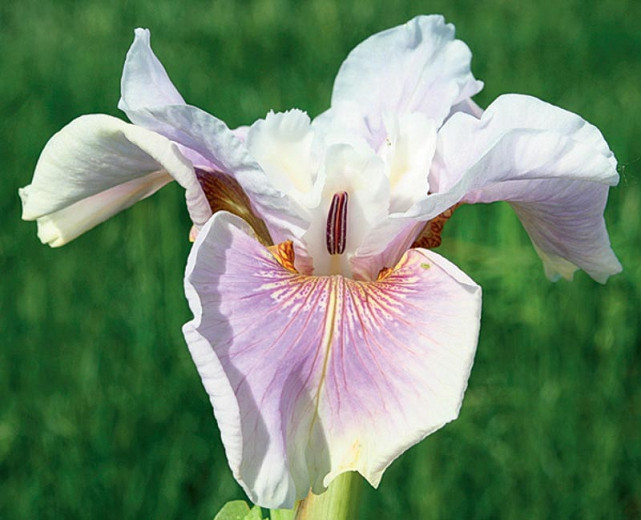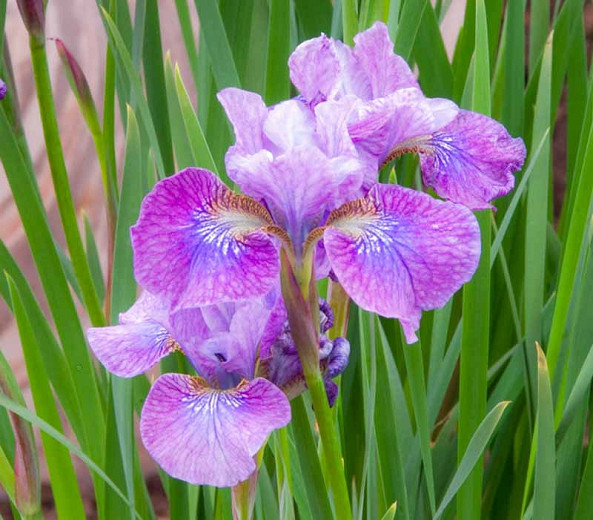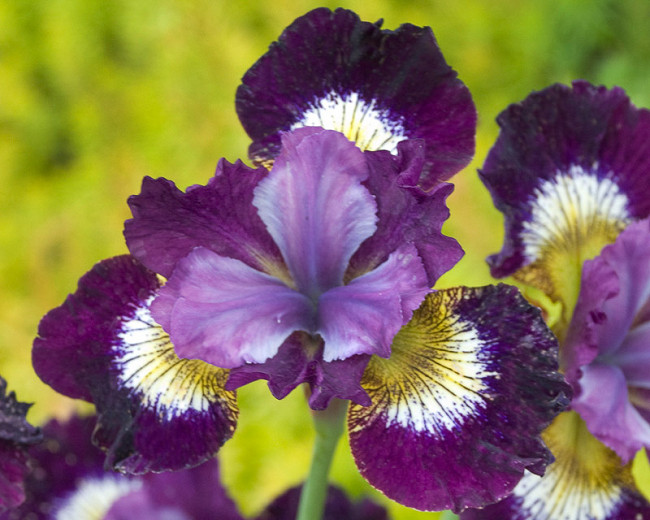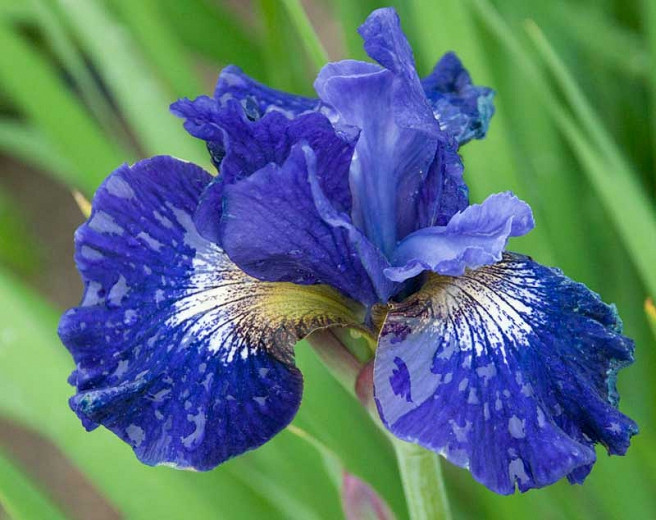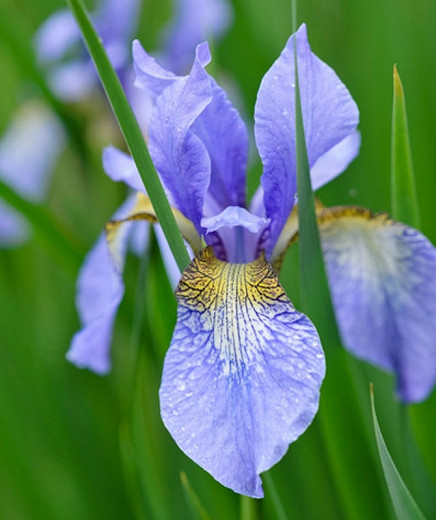Iris sibirica Lavender Bounty (Siberian Iris)
Iris sibirica ‘Lavender Bounty’ (Siberian Iris) is a clump-forming perennial, providing an elegant display of ruffled, lavender-pink flowers adorned with delicate white markings in late spring to early summer. Very floriferous with each of its multiple branches bearing up to 8 or 9 buds each.
Iris sibirica 'Lavender Bounty' (Siberian Iris) is a clump-forming perennial, providing an elegant display of ruffled, lavender-pink flowers adorned with delicate white markings in late spring to early summer. Very floriferous with each of its multiple branches bearing up to 8 or 9 buds each. After blooming, the grass-like foliage, consisting of sturdy clumps of upright gray-green, narrow and fairly rigid, blade-shaped leaves, is also one of its most attractive garden features. Spectacular when planted in groups.
- Won the Honorable Mention Award (1983)
- Grows up to 24-36 in. tall (60-90 cm) and 18-24 in. wide (45-60 cm).
- Performs best in full sun or part shade, in moist, fertile, humusy, organically rich, neutral to slightly acidic, well-drained soils. Shade is tolerated, but the flowering performance may be altered. While this lovely iris enjoys a wide range of soils, slightly acidic soil is where this plant will thrive. Drought tolerant, even though this iris prefers adequate moisture.
- Among the most trouble-free and low maintenance plants in the garden, Siberian Irises are deer resistant.
- A welcomed addition to beds and borders, city gardens, coastal gardens, cottage gardens, rain gardens or near streams or ponds, where it provides excellent color contrast.
- The best time to plant Siberian Irises is spring or late summer.
- Propagate by division of rhizomes from midsummer to early fall
- All parts may cause discomfort if ingested. Wear gloves and other protective equipment when handling.
- Toxic to dogs, toxic to cats, toxic to horses.
- Iris sibirica is a rhizomatous herbaceous perennial, from Europe (including France, Italy, Switzerland, Austria, Czech Republic, Slovakia, Germany, Hungary, Poland, Romania, Bulgaria, Former Yugoslavia, Belarus, Estonia, Latvia, Lithuania, Moldova, Ukraine and northern Turkey) and Central Asia (including Armenia, Azerbaijan and Siberia).
Requirements
| Hardiness | 3 – 8 |
|---|---|
| Heat Zones | 1 – 9 |
| Climate Zones | 1, 1A, 1B, 2, 2A, 2B, 3, 3A, 3B, 4, 5, 6, 7, 8, 9, 10, 14, 15, 16, 17, 18, 19, 20, 21, 22, 23 |
| Plant Type | Perennials |
| Plant Family | Iris Sibirica – Siberian Irises |
| Exposure | Full Sun, Partial Sun |
| Season of Interest | Spring (Late)Summer (Early) |
| Height | 2' – 3' (60cm – 90cm) |
| Spread | 1' – 2' (30cm – 60cm) |
| Spacing | 18″ – 24″ (45cm – 60cm) |
| Water Needs | Average |
| Maintenance | Low |
| Soil Type | Chalk, Clay, Loam, Sand |
| Soil pH | Acid, Neutral |
| Soil Drainage | Moist but Well-Drained |
| Characteristics | Cut Flowers, Plant of Merit, Showy |
| Tolerance | Clay Soil, Deer, Drought, Rabbit, Wet Soil |
| Attracts | Butterflies |
| Garden Uses | Beds and Borders, Bog Gardens, Ponds and Streams, Rain Gardens |
| Garden Styles | City and Courtyard, Coastal Garden, Informal and Cottage |
